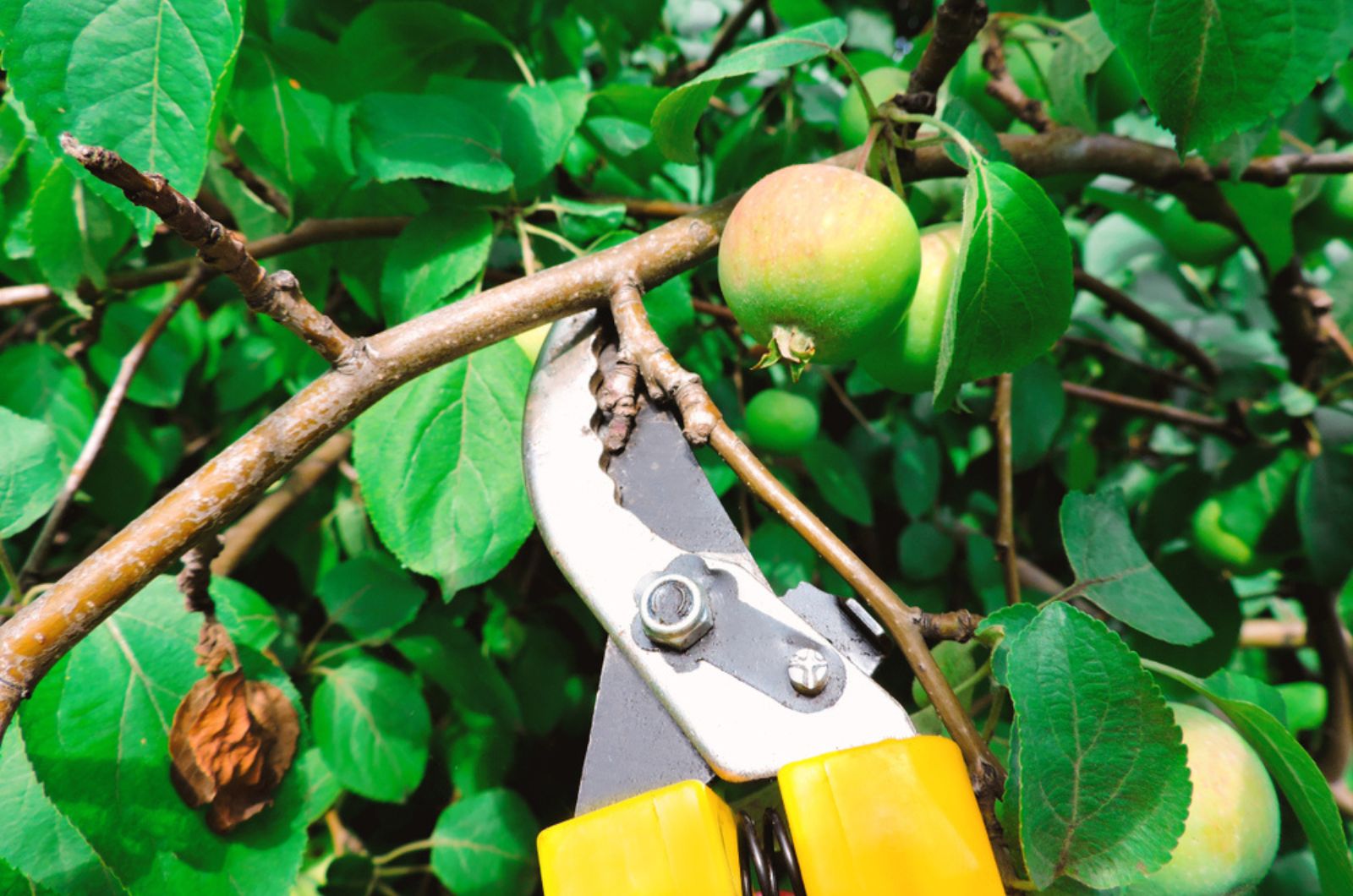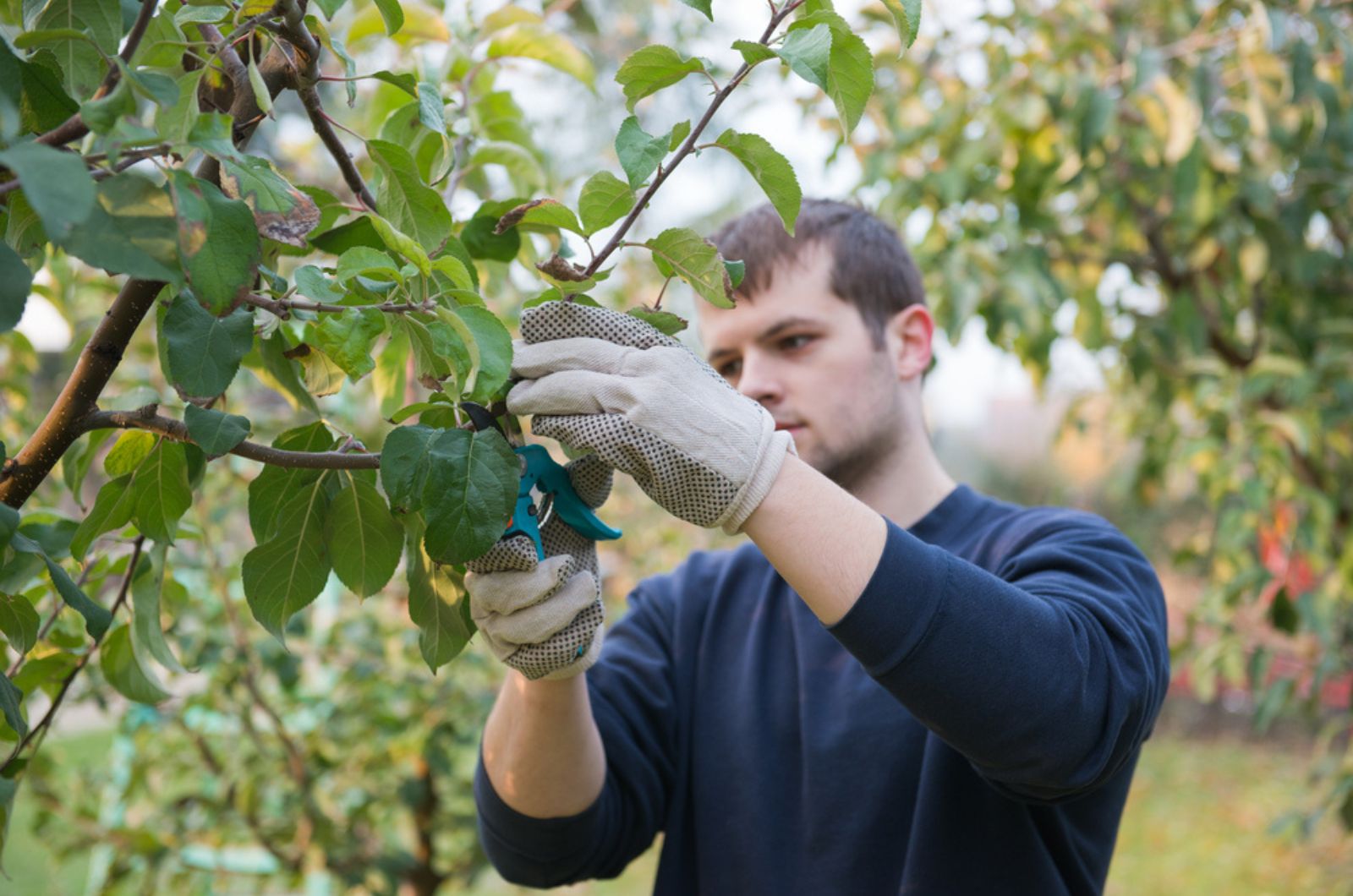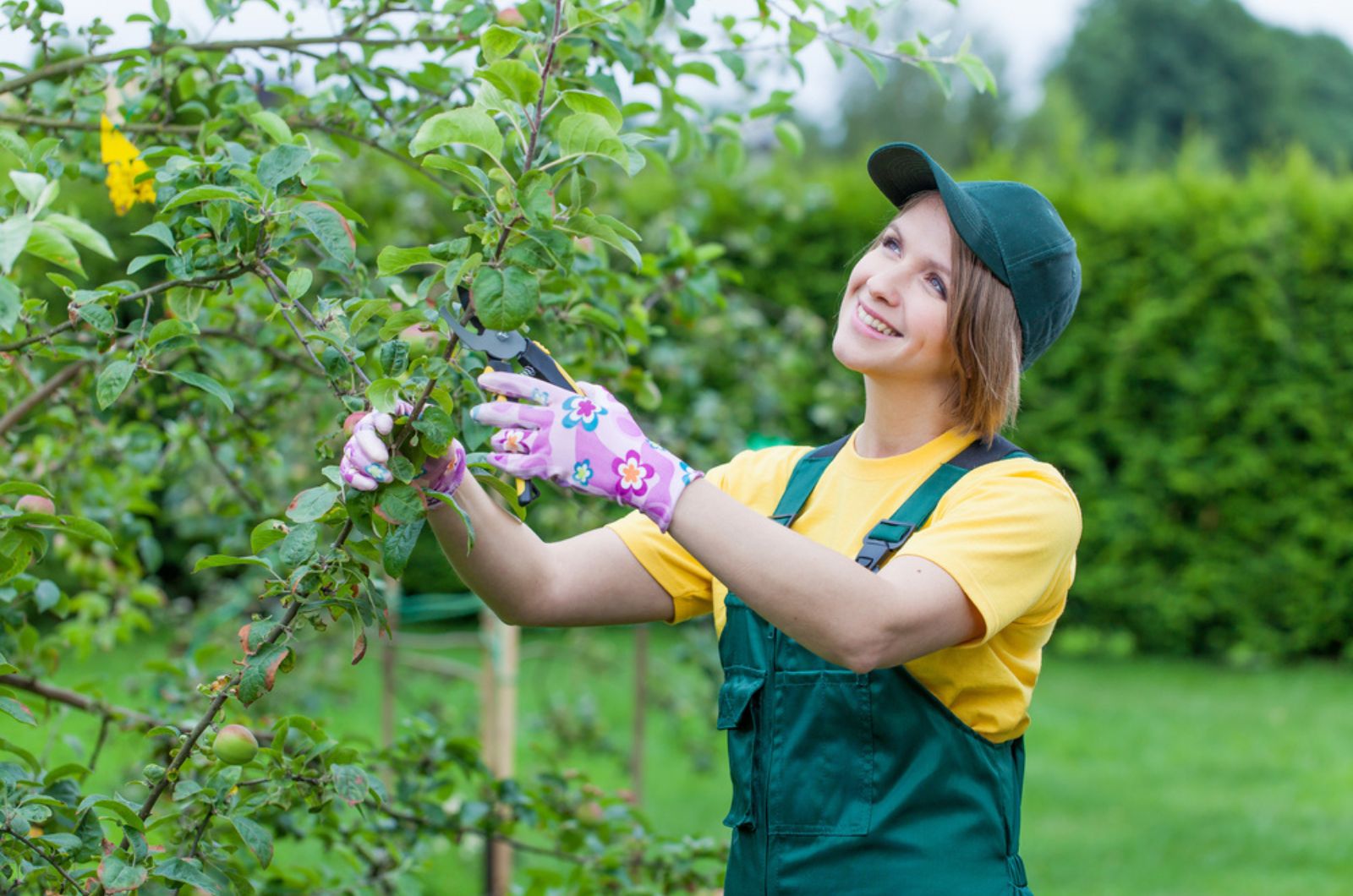Apples are one of my favorite fruits, and they bore me rather quickly because I can find them virtually anywhere. But when I visited my parents and tried their homegrown apples, I quickly realized I couldn’t get bored of this taste ever again!
However, it takes patience and maintenance to grow these trees, and one crucial part of their care routine is pruning.
This will prevent your apple tree from going berserk and allow you to only keep those branches that are bound to bear numerous fruits.
Here’s when and how you should trim your apple trees, as well as some tips on what you can do with the clippings.
Let’s get started!
Why Is It Necessary To Prune?
Whether you have a black diamond apple tree or any of the delicious cultivars, you know that they need pruning. That’s because regular trimming allows your tree to produce new and healthy growth.
This growth will, then, soon develop into branches that will produce flowers and form fruits later on. Older apple tree limbs are less productive than these, so you should rejuvenate them from time to time.
Next, pruning your apple trees prevents overcrowding of the canopy and stops the top branches from casting shadows into the inner parts of the tree, which eventually reduces the yield. These trees need plenty of sunlight in order to produce delicious apples.
Also, removing redundant branches will improve air circulation in and around your tree, reducing the risk of pests and fungal diseases which thrive in increased humidity. By keeping the middle of the tree “open,” you’ll keep your apple trees healthy and safe from these nuisances.
Additionally, regular pruning allows you to remove damaged, broken, dead, or diseased branches which don’t bear fruit and just waste the tree’s energy.
Finally, cutting into your apple tree’s branches will keep their size in check and prevent them from overcrowding your space or allow you to reduce their size if they’ve already overtaken it.
When To Trim Apple Trees
There are two times for pruning apple trees: winter and summer.
Winter Pruning
The main pruning time for apple trees is in late winter or even early spring. That’s when your tree is still dormant, but there are no extremely harsh conditions that will affect its hardiness and health.
During this time, you should give your apple tree a goblet shape, remove all the diseased, dead, damaged, and broken branches, and prune away water shoots.
You can also trim some lateral branches, especially if there’s too many of them or they’re blocking the sun from the lower ones.
However, remember to never remove more than a third of the tree at once. This will keep it healthy, promote desired new growth, and won’t encourage plenty of suckers to appear.
Just make sure to sterilize your tools before and after trimming, avoid pruning on extremely cold, rainy, or foggy days, and wait until all the humidity and dew of the early morning hours are gone.
Summer Pruning
Even though late winter is the main time for pruning apple trees, they also benefit from a summer trim.
This step may improve their yield the following year, so don’t skip out on it.
Unlike in winter, the summer prune should be very light. At this time, you should only reduce the size of the new growth by half, and that’s it.
This cutting back of new shoots introduces more light into the tree crown, which will promote bud setting and fruit production the following season.
But don’t do it too early in the summer or else your tree will produce a lot of new growth you’ll have to get rid of come winter. Instead, wait until your apple tree slows down or completely stops its growth and then give it a light trim.
That’s usually around July, but may be earlier or later in the season, depending on your region.
5 Tips On How To Prune Apple Trees
Pruning apple trees isn’t that hard, but there are some mistakes you should avoid when pruning trees and shrubs, including this one.
The most important advice I have to give is to use the 3-cut method when removing large branches, because that will cause the least damage and result in the fastest healing.
And here’s how to trim apple trees!
1. Train It Into A Goblet Shape
When pruning apple trees, you should try and shape them into a goblet, meaning you should leave the outer branches and remove most of the inner ones to open the middle.
Leave about 4-6 main branches that grow from the trunk and form a framework.
You’ll need to do regular pruning to maintain the goblet apple tree shape and remove some more limbs growing in the middle.
And when pruning, remember to trim as close to the branch as possible because this will increase healing.
Finally, try not to leave stubs. They heal slowly and pose a risk to your plant because diseases can quickly enter through the wound and result in dieback.
Note: This method only applies to free-standing and container-grown apple trees. Espaliers, fans, step-overs, cordons, etc. are different methods and have their own pruning needs.
2. Remove Damaged Limbs First
The first thing you should remove when winter pruning your apple trees are dead, diseased, or otherwise damaged branches.
They aren’t productive and only spend your tree’s energy, which could be more useful some place else.
Once you’re done with these, move onto limbs that intertwine and grow across each other. Remove one of the crossing shoots and leave more space for the remaining one.
This technique will prevent branches from rubbing against each other, which damages the bark and creates an opening for diseases.
Crossing branches can make them compete for sunlight, and removing one of them will mitigate this issue as well.
3. Prune Away Suckers
Apples are on the list of fruits you can effortlessly grow in your garden, but they still need some maintenance. And that includes pruning away suckers that waste the tree’s energy without contributing delicious fruits.
They grow from the trunk of the tree and are also known as water shoots. But don’t worry! They won’t produce any fruit, so you’re not removing viable branches.
Pro tip: If your tree is filled with suckers, remove only about a third of them at a time. If you prune all of them, your apple tree will only create more the following year.
4. Leave The Leaders Of Main Branches
Don’t prune the leaders – the tips of the main branches. It won’t do your tree any harm, but it will encourage new growth. This will produce more limbs and congest the center you tried so hard to open.
The only time you should consider trimming the leaders is when the tree has outgrown you and the space or is too tall for you to reach. In this case, you can remove the main branch all the way to the shorter one that can replace it.
5. Remove Some Lateral Limbs
Your main branches will produce a lot of smaller shoots all over the place. You should ensure that they are equally spaced so that your main branch doesn’t get too heavy with the fruit.
Remove some of them so that they are all about handwidth apart.
And don’t forget to remove all those lateral branches that are blocking the sunlight from the lower shoots. This will allow the remaining ones to get as much light as they need for optimal fruit production.
Bonus Tip: Don’t Prune Too Much
Never remove more than a quarter (or a third at most) of the entire apple tree. If you prune more than this, it could encourage your tree to produce more water shoots that are unproductive and don’t bear any fruit.
After you’re done with pruning, there should be enough space between branches for a small bird (like a robin) to fly through them without touching anything with its wings.
What To Do With Apple Tree Clippings
After you finish your winter or summer prune, you’ll be left with a lot of apple tree branches and trees. So, how do you use them?
Cut the branches into smaller sections and leave them in a shed or any covered and dry area to dry. You can use them as a fuel for your fireplace, a wood burning stove, or even as barbecue kindling the following year.
Applewood has an interesting smell when it burns, and you can use the wood ashes afterwards in your garden, for livestock and pets, house cleaning, etc.
Wood ashes can increase soil pH levels, protect your plants from frost, reduce the risk of blossom end rot, etc.




